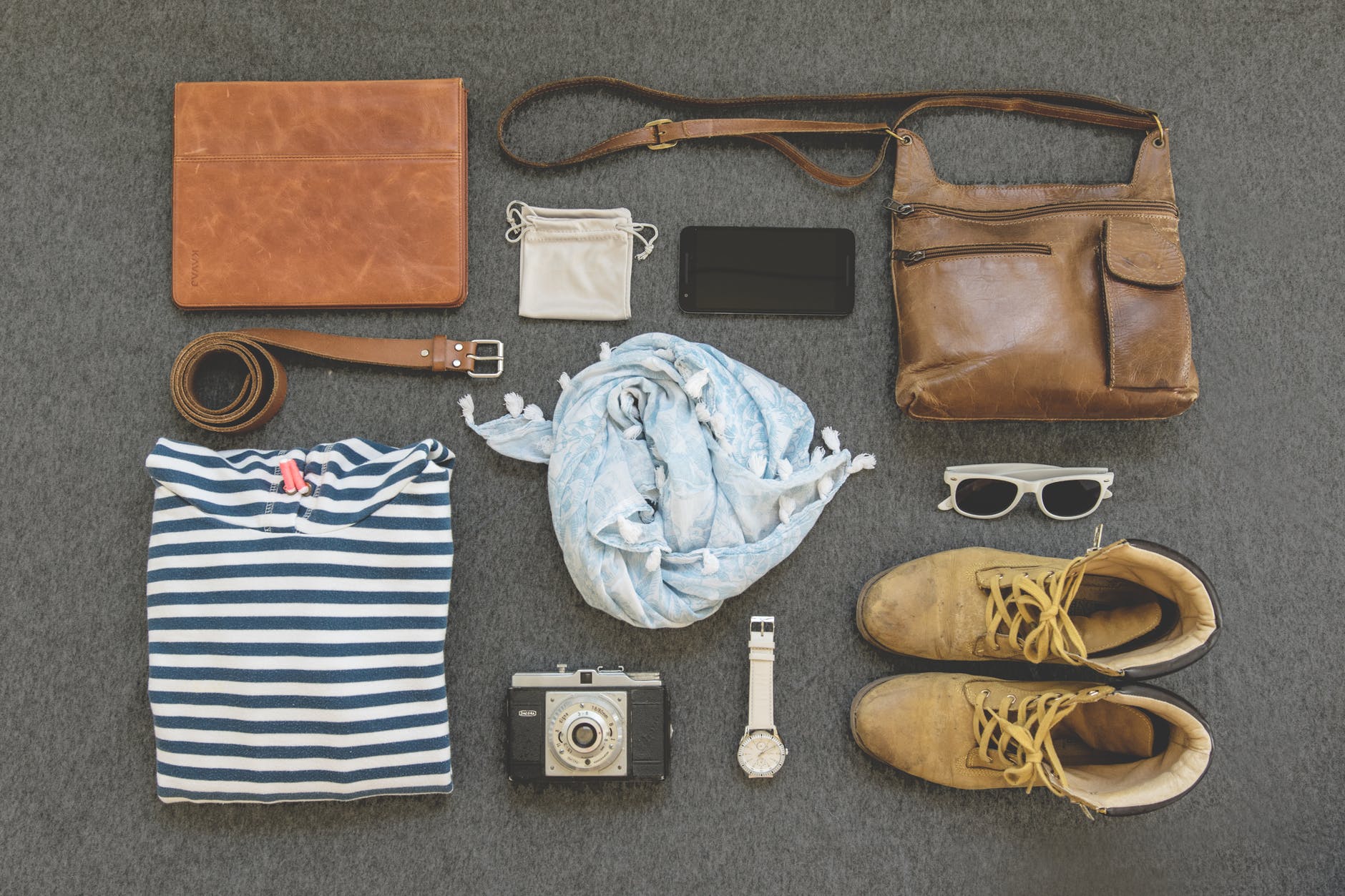
How to Participate in Fashion in a Sustainable Way
Fashion is undoubtedly one of the major strains on the environment at the moment, and for a long time, it appeared that “fashion” and “sustainable” did not belong in the same sentence. However, things are changing for the better every day, and it is now not only possible to still participate in fashion while making sustainable choices, but it is easier than ever. Here are a few tips to ensure that your fashion sense isn’t killing the environment and you can rock your clothes with a clean conscience.
1. Reduce: Buy less
The most important tip, and the one that is going to make the biggest difference is to consume less, in general. All the “sustainable” shopping in the world won’t make a positive impact if you consume way more than you need. The best thing you can do is to limit yourself to only a few special garments, and not give in to marketing and trends too much.
That doesn’t mean living off of one pair of pants and two t-shirts; but on a shopping trip, be more mindful of what you buy, especially if you’re buying online. Only purchase items that are truly special or that you absolutely need, and resist throwing everything in your cart, only to send it back later, or allow it to gather dust in the back of your dresser.
2. Reuse: Breathe new life into your clothes
The second very important lesson is to reuse everything you have. It’s way more fun to just go out and buy a new outfit when you’re bored with your old ones, but it’s also extremely wasteful. You’re not just leaving perfectly good clothing unused, but you’re also wasting money on this cycle.
Reusing clothing doesn’t necessarily come naturally, but if you train yourself to look for new uses for things you already have, soon enough, you’ll be able to reuse all your garments creatively. If you’re bored with something or it doesn’t suit you anymore for one reason or another, don’t be afraid to cut, sew, dye, shorten, add to it in order to create an entirely new piece.
Alternatively, you can use it differently. For example, if you’ve got a scarf you no longer wear, you can use it as a belt, as a hair accessory, or you can cut it and make a handkerchief out of it. Almost anything can be reused in some way if you learn to think outside the box.
3. Recycle: Recycle your unwanted garments
There was a time when textile recycling was not very common, so one had no choice, but to throw away clothes. However, now there is no reason for perfectly good clothing (and even damaged garments) to end up in a landfill. There are plenty of recycling opportunities, and if you don’t have a local place that recycles textiles, selected stores like H&M, ZARA and others accept used clothing that they either donate or recycle, according to their condition. You can also opt to cut up the clothing and recycle it yourself as cleaning rags for around the house, pillow stuffing, or other domestic jobs.
But your first step should always be trying to find a new home for them, whether you sell them, swap them, gift them, or donate them. If the condition is too poor to pass on to someone else, then they can be recycled.
4. Buy second-hand
Another thing to keep in mind is that buying new is not the only way to acquire your clothes; shopping second-hand is much more sustainable and less expensive, so it’s a win-win. Traditional thrift stores are the most obvious way to shop second hand, but there are other options, as well, such as consignment stores, or vintage shops.
And if online shopping is your thing, you can still do that while buying used. In recent years, apps and websites have popped up as platforms to connect people selling their clothes and people looking to buy clothes. Depop, Poshmark, TheRealReal and Vestiaire Collective are just a few of the most popular online outlets for this sort of thing.
Also, if you’re going to spend hours scrolling through Facebook and Instagram anyway, you might want to know that Facebook has groups that are dedicated to selling and swapping clothes and a lot of online vintage stores advertise on Instagram.
5. Don’t over-order online
One of our major problems right now is that we over-indulge when it comes to online shopping. We order way too many clothes that first get shipped to the warehouse, then get shipped to our homes, and then finally get sent back to the warehouse. That’s a lot of carbon emissions just because we wanted to try on something cute. When ordering online, try to plan your orders as to create as few shipments as possible.
- Pick slower shipping
And speaking of online shopping and shipping, expedited shipping usually means that the packages are being flown over, and as we know, air travel is incredibly damaging to the environment. Few orders are that urgent that they can’t wait a few more days for regular, ground shipping. It’s cheaper, too.
- Opt for less packaging
Another issue that endless online orders create is the excessive amount of packaging, particularly plastic, but also tons and tons of cardboard boxes. If there’s an option for less packaging, always go for that one. Alternatively, write to the website in question and ask for less packaging, in general. The more packaging there is, the more waste and trash is created.
6. Go for natural, biodegradable fibers
Natural fibers tend to be better when it comes to high-quality clothing that you want to use and keep long-term because the garments are more comfortable, age better, and don’t create more plastic waste. In addition, when it comes time to say goodbye to them, it’s generally easier to reuse and recycle them.
A caveat is necessary, here – unless they are recycled or produced in an otherwise environmentally conscious manner, certain natural fibers can take up a lot of resources to produce, especially water. That is to say that even natural fibers aren’t a perfect solution, but they are a good start.
7. Look into labor practices
Labor practices are a hot button issue right now, and for good reason – a horrifying majority of companies use sweatshop labor to put their garments together. A lot of the time, these workers are children, and as expected, they work long, difficult hours, in terrible conditions, and for very little pay.
Sweatshops are usually located in third-world countries because of the cheaper labor, but it is not unheard of to have them in first-world countries, including the United States, so that “made in the United States” label doesn’t necessarily mean that the garment is made sustainably.
Unfortunately, the supply chain for clothing companies is typically frustratingly opaque, so it’s very difficult to gain any real insight into who is actually creating these items sustainably. The best we can do is educate ourselves and search for online resources that can shed a bit of light. In the meantime, beware of “greenwashing” and companies
who slap on a “sustainable” label as a marketing strategy, with no actual backing.
Final thoughts
Fashion certainly still has a long way to go until it becomes truly sustainable, but that doesn’t mean we can’t all start making better, smarter, and more mindful choices right now. There are plenty of things you can do to ensure that your shopping habits are much more sustainable and that you indulge in fashion in a much more environmentally
conscious way.
Keeping in mind the reduce-reuse-recycle motto is always the right step forward but you can also look into second-hand shopping, being more mindful of the volume of online shopping you do, and the fibers your clothes are made of too.
Article written for WhosGreenOnline.com by: Emily Henderson. Emily Henderson is a San Francisco based writer, blogger, and editor. She writes on various subjects but is committed to living a more sustainable life and enjoys sharing tips and information which people can easily incorporate into their everyday lives.
 WhosGreenOnline.com Your Online Magazine and Directory for Green Business, Product, Service and News!
WhosGreenOnline.com Your Online Magazine and Directory for Green Business, Product, Service and News!





